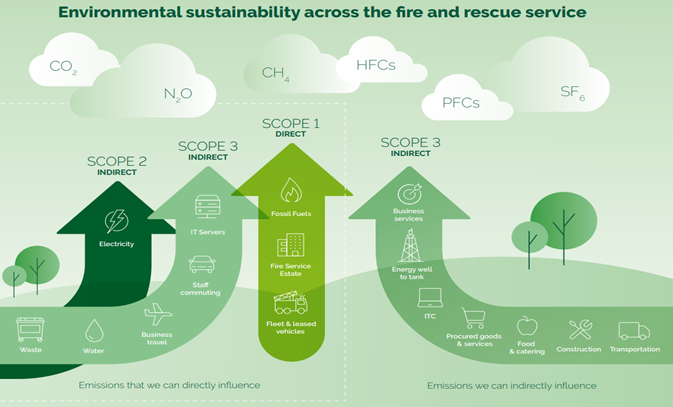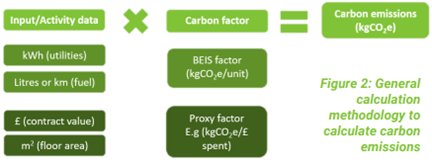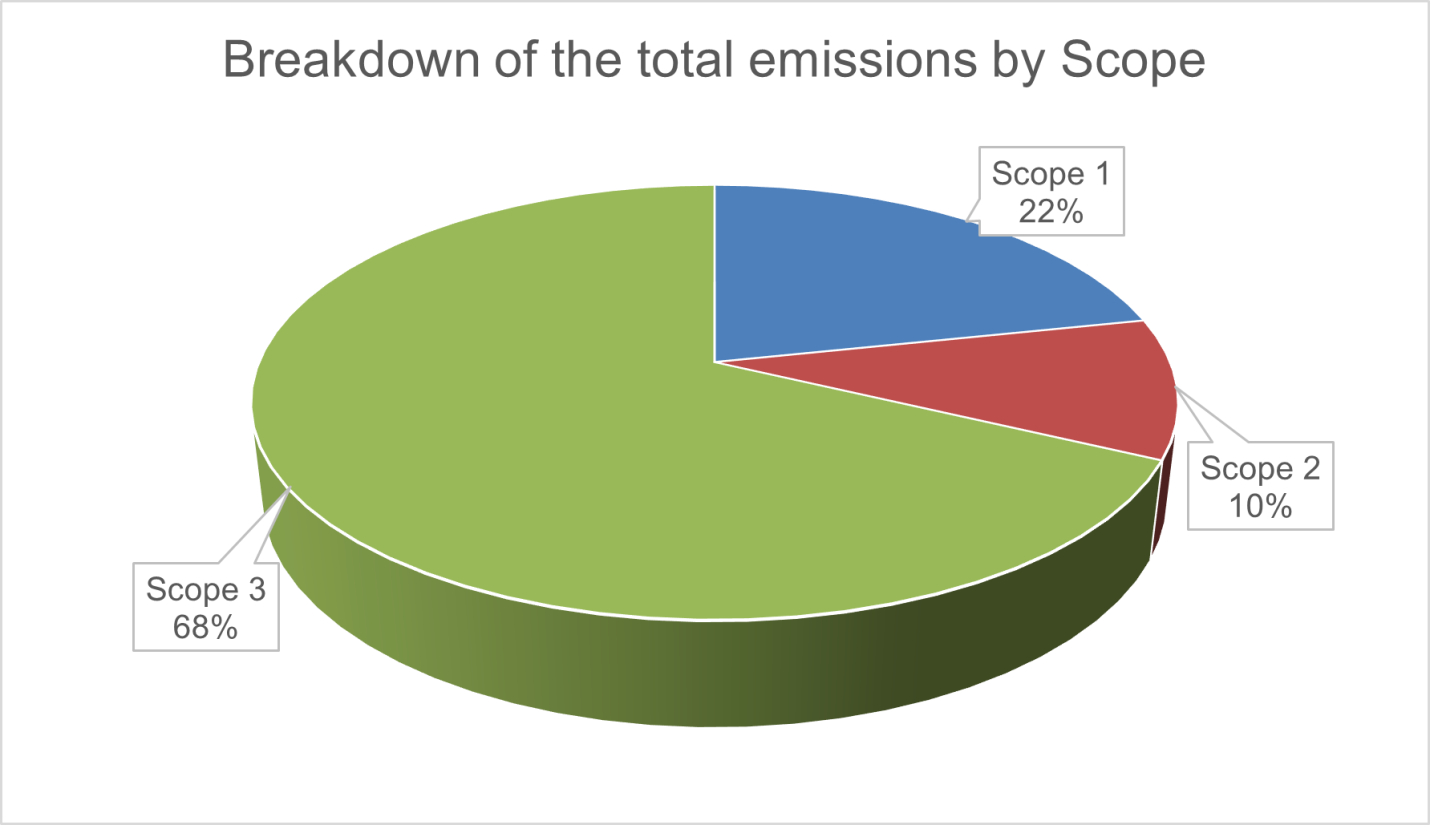CDDFRS have been working over a number of years to measure and reduce their carbon emissions which is sometimes referred to as a Carbon Footprint.
This section provides an inventory of greenhouse gas emissions for CDDFRS for the period between June 2020 and May 2021. This forms the ‘baseline’ against which future progress will be measured.
This footprint has been calculated according to the Greenhouse Gas (GHG) Protocol, the most widely used and accepted methodology for greenhouse gas accounting.
The GHG Protocol classifies emission as either scope 1, 2, or 3 (illustrated in figure 1 below).
- Scope 1 includes the emissions from sources that an organisation owns or controls directly – for example, the burning of gas for heating buildings or diesel fuel for running fire appliances, wood burnt for training exercises is also included but makes a very small contribution (0.12%) to total emissions.
- Scope 2 caters for the emissions that an organisation causes indirectly through purchased energy such as the electricity it consumes from the National Grid.
- Scope 3 covers the emissions that occur within the organisation’s value chain. They fall into two categories. The first of these are the ones that the organisation can influence directly such water consumption and waste generation/processing. The second category consists of items over which CDDFRS’s has no direct control but may be able to influence. Examples include the environmental sustainability of the electronic or computing equipment we use or the methods of transport used by our suppliers. We could for example select mobile phones that can be easily recycled and use local suppliers whenever possible to reduce the amount fuel used to deliver goods to our premises.
How Carbon Footprints are Calculated
A carbon footprint is calculated by multiplying activity data (such as the litres of vehicle fuel used or kWh of electricity/gas consumed) by an associated emissions factor. Carbon dioxide (CO2) is the most well known of all of the greenhouse gases. There are six other commonly reported GHGs, which can be seen in figure 1 on the previous page. In footprinting “carbon dioxide equivalent” (CO2e) is used in order to express the impact of the other gases in terms of the amount of CO2 that would create the same amount of warming.
The methodology used by CDDFRS to calculate its carbon emissions is set out in figure 2.
The carbon footprint has, wherever possible, been calculated using actual activity data.
If actual activity data was not available, various benchmarks and proxies have been used. For example, typical electricity consumption per m2 of a building. When input data is scarce, proxy factors have been used to estimate the emissions from the information available, for example the financial value of a contract.
The CDDFRS carbon footprint for the baseline period was 5614 tCO2e.
22% of the footprint is made up of Scope 1 emissions (1218 tCO2e) arising from fleet and building fuel consumption.
Scope 2 emissions, 583 tCO2e, arising from building electricity use account for 10% of the footprint.
The vast majority of CDDFRS’s carbon footprint, some 3812 of tCO2e, is made up from scope 3 emissions which account for 68% of the total.
Figure 3
The scope 3 emissions used in the baseline fall into six categories, namely;
- Purchased goods and services.
- Capital goods.
- Fuel and energy related activities.
- Waste.
- Business travel.
- Employee commuting.
Figure 4
The Scope 3 emission figures used to calculate our baseline carbon footprint are in many cases based on the financial value of a contract with our suppliers. This is quite a simplistic measure and CDDFRS will aim to replace this with better data as it becomes available. Our baseline carbon footprint will need to be recalibrated from time to time to reflect this.



